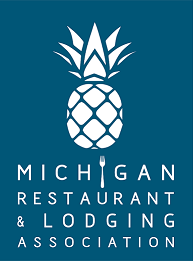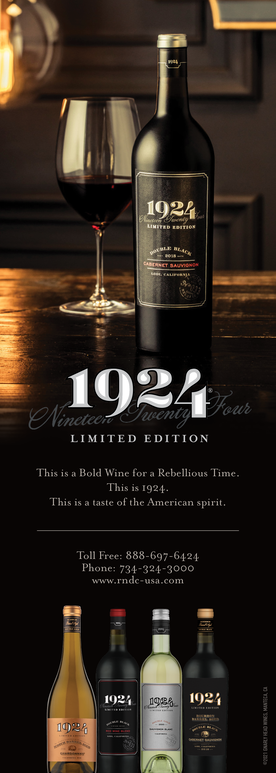Ask the Experts: Addressing the Rules of Trade Dress
By: Michael Cole | Fahey, Schultz, Burzych, Rhodes

Question: What is Trade Dress?
Answer: “Trade Dress” is a protectable form of intellectual property that generally captures the overall appearance or look and feel of how something is offered for sale to the public as distinguished from others. This can include the unique design of a product or its label or packaging. For example, the overall shape and design of Coca Cola’s® glass bottles, the unique visual components associated with McDonald’s Golden Arches®, the silver Klondike® wrapper and its square size and stippled texture, and a distinctive method of displaying wine bottles have all been recognized as protectable trade dress.
The interior décor and distinctive layout of restaurants may also constitute protectable trade dress. For example, in Freddie Fuddruckers, Inc. v. Ridgeline, Inc. the white tiles, open food preparation area, visible ingredients, and certain other design features were protectable because that distinctive layout had become uniquely identifiable with Fuddruckers® restaurants. On the other hand, T.G.I. Friday’s® turn of the century motif, the generic layout of televisions and pool tables, and the non-distinctive arrangement of Hooters® restaurants have all been denied protection because the claimed trade dress elements in those cases had not become uniquely associated in the minds of consumers with those respective concepts.
Answer: “Trade Dress” is a protectable form of intellectual property that generally captures the overall appearance or look and feel of how something is offered for sale to the public as distinguished from others. This can include the unique design of a product or its label or packaging. For example, the overall shape and design of Coca Cola’s® glass bottles, the unique visual components associated with McDonald’s Golden Arches®, the silver Klondike® wrapper and its square size and stippled texture, and a distinctive method of displaying wine bottles have all been recognized as protectable trade dress.
The interior décor and distinctive layout of restaurants may also constitute protectable trade dress. For example, in Freddie Fuddruckers, Inc. v. Ridgeline, Inc. the white tiles, open food preparation area, visible ingredients, and certain other design features were protectable because that distinctive layout had become uniquely identifiable with Fuddruckers® restaurants. On the other hand, T.G.I. Friday’s® turn of the century motif, the generic layout of televisions and pool tables, and the non-distinctive arrangement of Hooters® restaurants have all been denied protection because the claimed trade dress elements in those cases had not become uniquely associated in the minds of consumers with those respective concepts.
|
Can Trade Dress be Registered Like a Trademark?
Yes! Trade dress can be registered with the United States Patent and Trademark Office (“USPTO”). Trade dress is registrable if it is either: 1) inherently distinctive, meaning consumers immediately identify the trade dress alone as an indication of source of the users goods or services; or 2) has acquired distinctiveness or secondary meaning through long-term use, advertising, and promotion. When applying to register trade dress, applicants should take care to make sure their trade dress is not functional and therefore unprotectable. Trade dress is functional if the claimed elements are essential to an article’s use or purpose or if it affects their cost or quality. In other words, trade dress cannot be something that is necessary for others to use in order to compete or simply makes a product more useful or easier to use. For example, the dot size, color, and shape of Dippin’ Dots® ice cream were held to be functional and not unique enough to warrant trade dress protection because the court found that any ice cream prepared in the same flash-frozen manner would have the same qualities. In another example, the red color of a chicken feed bowl was also found functional because it was widely known that adult chickens are attracted to the color red and therefore the red color was merely useful in attracting chickens to their feed. Practical Pointers in Choosing and Developing Protectable Trade Dress In choosing and developing protectable trade dress, businesses should consider the overall size, shape, lay-out, colors, materials, and other distinctive elements associated with how an item is offered for sale. Unique features, arbitrary colors, distinctive shapes, and atypical design elements as compared to competitive products are more likely to be recognized as protectable trade dress. In that regard, trade dress owners should practice uniformity in the application of their trade dress. Deviations or inconsistent use of trade dress may render it unprotectable. Importantly, users should refrain from advertising their trade dress as “useful” (i.e., the red colored feed bowls) to avoid functionality. Alternatively, users should consider “Look For” marketing strategies (e.g., “Look for the Blue Triangular Bottle.”) so that consumers start associating the elements the user wants to protect with the user’s brand. |
Finally, because protectable trade dress must be inherently distinctive or have acquired distinctiveness through use, newer designs may not be immediately registrable. Accordingly, developing a robust strategy to protect new trade dress as it acquires secondary meaning is paramount to being able to enforce trade dress rights now and in the future.





